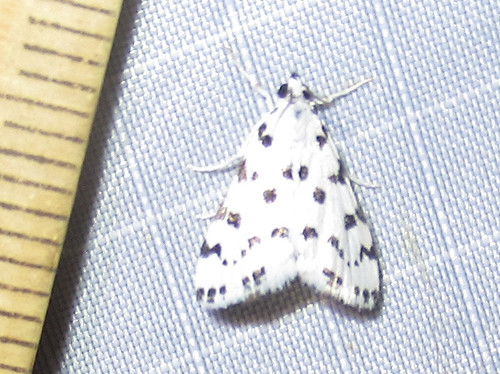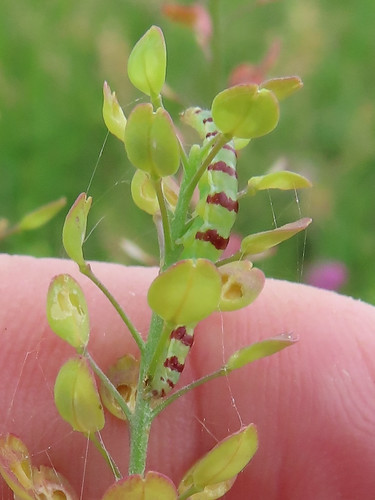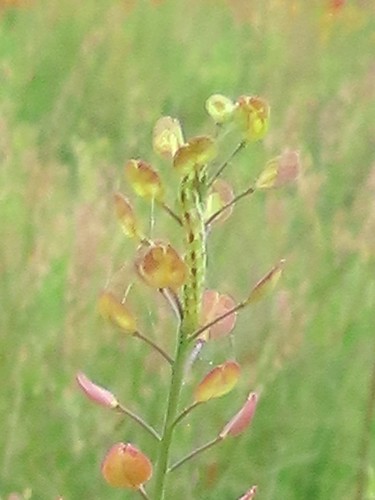Common Moth, Rare Caterpillar
It's probably not an unusual situation that the larvae of a common species of moth are poorly known and seldom documented. Despite the efforts of guru's like David L. Wagner and enthusiasts like @k8thegr8, a lot of caterpillars still elude us or remain unidentified.
Such seems to be the case of the Spotted Peppergrass Moth (Eustixia pupula, Crambidae; a.k.a. the "Peppergrass Pyralid").
http://mothphotographersgroup.msstate.edu/species.php?hodges=4794
https://bugguide.net/node/view/29262

I accidentally documented a couple of larvae of this species on the Texas coast in late May and only recently discovered what I had done:
https://www.inaturalist.org/observations/120496553
https://www.inaturalist.org/observations/120653172


I tell the story of that documentation in the notes with the first of these observations, but to recap: Between Moth Photographer's Group, BugGuide, iNaturalist, and a few other online resources, there are well over a thousand images of adults of the Spotted Peppergrass Moth...and yet my images of the caterpillar seems to be the first. I uploaded these to BugGuide a short while ago.
https://bugguide.net/node/view/2125868
https://bugguide.net/node/view/2126333
Dyar described the later instar larvae over 120 years ago:
https://www.biodiversitylibrary.org/page/27876086
I suspect there are any number of images of the larva of this species "out there" on iNaturalist and other venues but they have been overlooked or unidentified. I guess one could start seaching through unidentified Lepidoptera on iNaturalist to look for similar caterpillars, but that seems to be a very inefficient method. Observers have annotated the host plant (e.g., "Lepidium") on only a very small percentage of such images of caterpillars. Those annotations might point in the right direction, but such instances are unfortunately rare. There needs to be a more efficient way of searching through unidentified caterpillars once a search image for a species (to the human eye) can be established. I'm open to suggestions!
UPDATE: With hours after I posted the above images to BugGuide, the Balabans were able to uncover three additional observations of previously unidentified larvae from NY, NJ, an AL (2016-2021) which all appear to be various instars of Eustixia pupula:
https://bugguide.net/node/view/2126333
And so, science marches on!




























